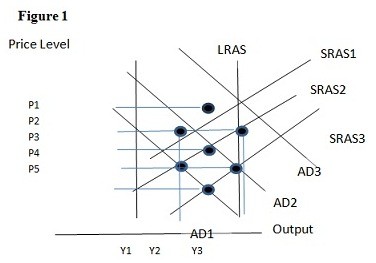Expansionary policies are government policies that
A) decrease aggregate supply. B) increase aggregate demand.
C) decrease aggregate demand. D) increase aggregate supply.
B
You might also like to view...
A shortage exists
A) in equilibrium. B) when quantity supplied is greater than quantity demanded. C) when quantity supplied is less than quantity demanded. D) at the market clearing price.
As more and more resources are dedicated to an activity
a. the benefits will increase proportionately. b. the benefits will become smaller and smaller while the costs will rise. c. the demand for that activity will increase. d. the costs will be offset by the benefits received from the activity.
Using Figure 1 above, if the aggregate demand curve shifts from AD2 to AD1 the result in the long run would be:
A. P4 and Y1. B. P4 and Y2. C. P5 and Y1. D. P5 and Y2.
Markets in which firms sell their output of goods and services are called:
A. command markets. B. resource markets. C. product markets. D. mixed markets.